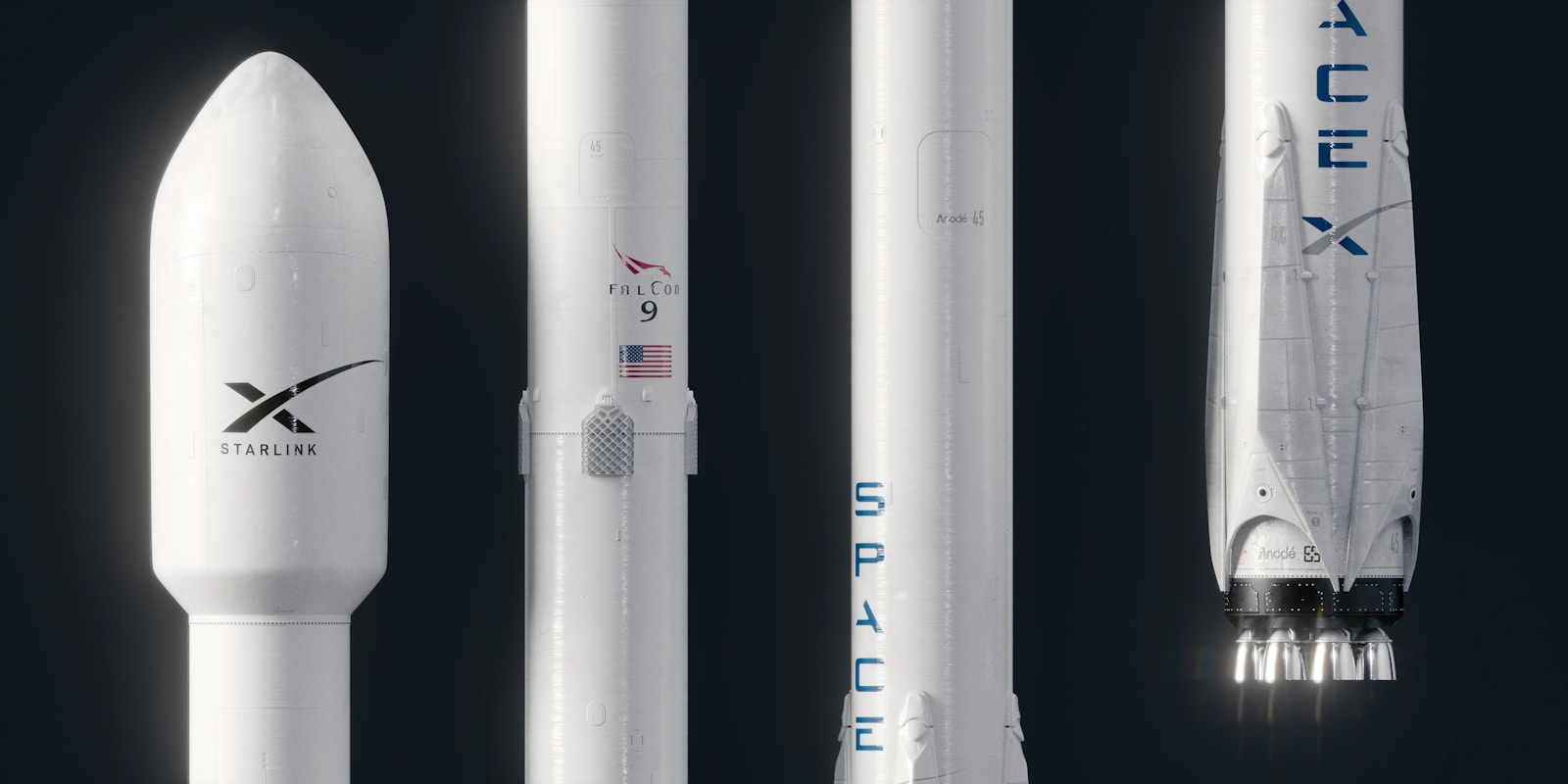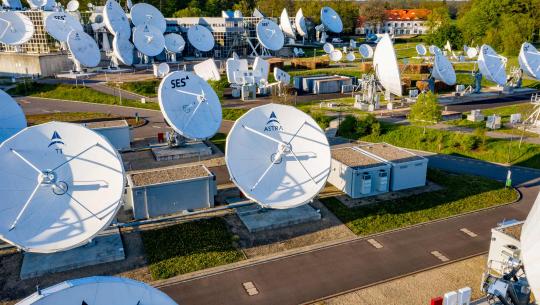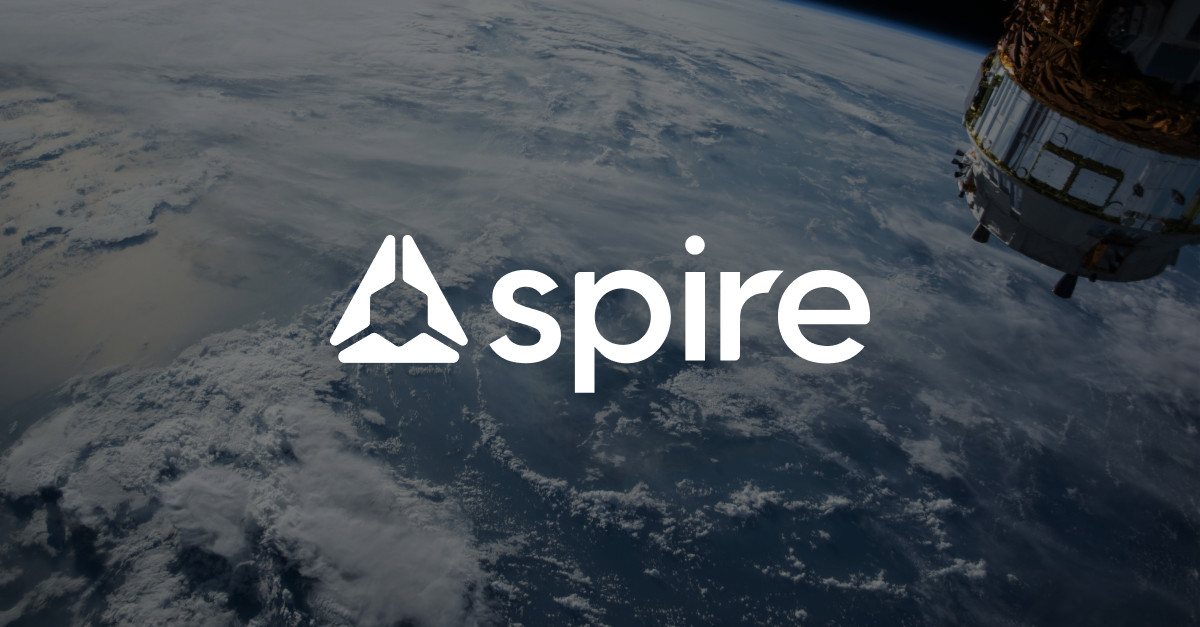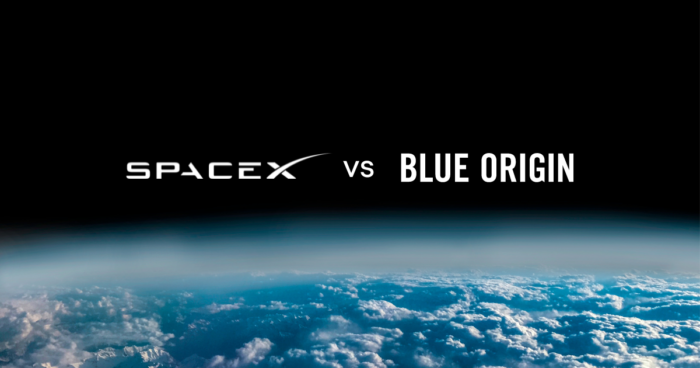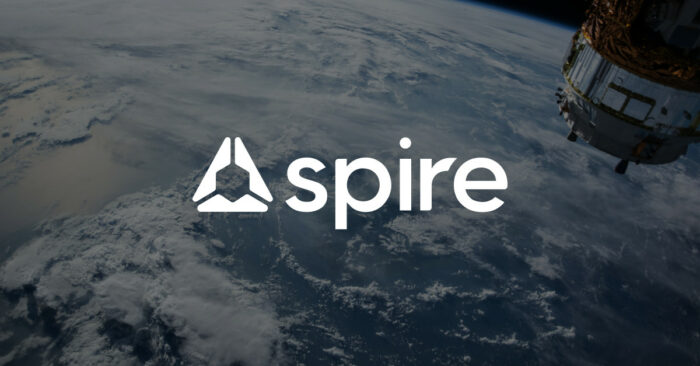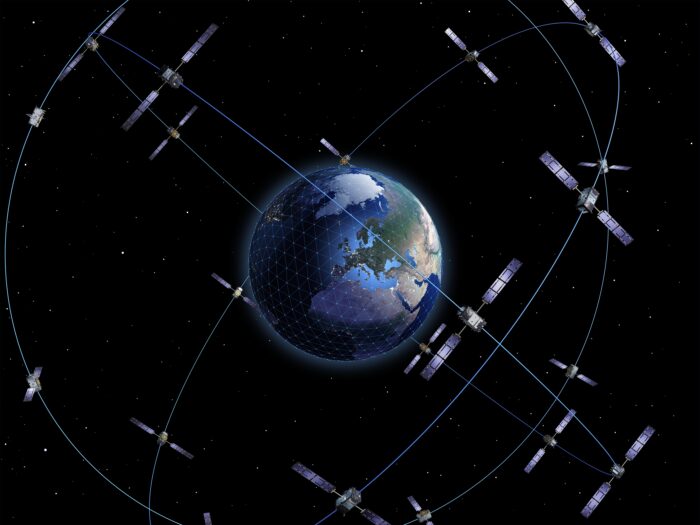By: Julia Seibert
Sometime during the last ten years, the stars aligned in SpaceX’s favor. Once a small startup with a reputation for blowing up its rockets, the company has ballooned into spaceflight’s undisputed kingpin – largely thanks to its cost-effective, partially reusable Falcon 9 rockets. Along with this, developmental delays and even political shunning brought once-mighty competitor launchers to their knees, leaving the market SpaceX’s for the taking.
And take it did. The company accounted for 80% of payload mass launched to orbit last year, sending 96 successful rockets to space that made up 92% of the US’s 2023 launches – all while its rivals’ launches stayed in the single digits. Now, with SpaceX’s newest baby – the gargantuan, fully reusable Starship – threatening to upend the industry once more, the competition is beginning to wake up. But will anyone prove a worthy rival?
SpaceX Competitors
United Launch Alliance (ULA)
ULA and SpaceX go way back. While SpaceX was still working on their prototypes, it was ULA that held the reins of the US launch industry – not that it was great shakes at the time. Around the turn of the century, cheaper rockets from Russia or Europe took up most of the commercial market. The only market available to the incredibly expensive rockets built by US companies (Boeing’s Delta and Lockheed Martin’s Atlas series) was launching US national security payloads. But despite the rivalry, costs didn’t go down; they went up. A few lawsuits later, the US government said enough was enough, and, in 2005, forced the two contractors into a joint venture: ULA.
Things were going swimmingly until, around 2014, when SpaceX and its self-landing boosters were beginning to prove a serious threat. ULA reacted by overhauling its company processes to cut costs and announced the development of a new rocket – Vulcan Centaur – designed to compete with SpaceX. Vulcan, a heavy-lift, towering monster of a rocket, made its debut in early 2024 after years of delays due to issues with its engines and upper stage. But whether Vulcan has what it takes to challenge SpaceX’s dominance remains to be seen. The rocket is, first and foremost, a government-focused endeavour – which probably has something to do with the $1 billion yearly subsidy ULA receives from the US military. Vulcan’s often-touted USP of being primed for further-out orbits makes it well-suited for governmental entities who prefer to send their all-seeing satellites to those regions. And it’s not (that) expensive; its roughly $110 million launch price is less than a third of what its heavy-lift predecessor, the Delta-V Heavy costs.
Still, it’s not yet clear just how well a rocket designed for faraway orbits will fare in a mostly Low Earth Orbit (LEO)-focused industry. It may also take a while to match SpaceX’s breakneck cadences, with only five more Vulcan flights scheduled for 2024 thus far. Plus, not reusing the rocket after each flight puts a cap on how much ULA can compete with SpaceX on price and launch cadence. ‘What will keep Vulcan alive’, says Todd Harrison, a senior fellow at the American Enterprise Institute, ‘is U.S. military policy that says they want to have at least two launch providers, and commercial customers that want to avoid becoming dependent on Elon Musk,’ as reported by Defense One. Once other reusable vehicles hit the market, he says, ‘all bets are off’.
Visit company’s profile page.
Blue Origin
It just so happens that one such vehicle is set to make its long-awaited maiden flight in 2024: Blue Origin’s New Glenn, a rocket of around 100 meters in height with a reusable booster. It’s quite literally a tall order for Blue; since the company’s founding almost 24 years ago, the rocket will be its first piece of orbital tech.
In some respects, Blue Origin and SpaceX are quite similar. Founded by billionaires around the same time, they both envision a future for humanity in space, operate reusable rockets, and even employ roughly the same amount of staff. But while SpaceX went on to corner the launch industry, Blue lagged, with only a suborbital rocket used for tourism to show for its efforts. That’s not to say Blue hasn’t been busy; behind the scenes, it has been developing a space station, a method for turning lunar soil into solar panels, and a lunar lander. Unfortunately for Blue, though, its most headline-grabbing moments so far have been its many feuds with SpaceX; be it snarky tweets, passive-aggressive infographics, or lengthy lawsuits that delayed NASA’s lunar program.
Today, Blue Origin hopes to revitalize its standing with New Glenn, already years in delay, by speeding up clunky management processes à la Elon Musk: do first, ask questions later. If that happens, Blue might have what it takes to give SpaceX a run for its money. Glenn sports a self-landing booster, a seven-meter-wide payload fairing, flight-proven methane-guzzling engines (burning cleaner than carbon-based fuels), and – most importantly – a wealthy owner. Blue advertises Glenn as being able to lift 45 metric tons to LEO, putting it roughly around a reusable Falcon Heavy’s capacity (Falcon 9’s beefier sibling). What’s still unknown is the price, which Blue is notoriously mum about – but if the company succeeds in eventually developing a reusable second stage, Glenn could very well become cheaper than the partially reusable Heavy. Still, while Blue has some suborbital rocket-landing experience under its belt, it took SpaceX around four years of flying the Falcon 9 to stick the first landing. If Blue takes anywhere near that long, SpaceX’s Starship might already be siphoning off Glenn’s customers.
Visit company’s profile page.
Rocket Lab
The fates of Vulcan and New Glenn lie in the future; Rocket Lab, however, is already proving that it means business. The company, founded in 2006 in New Zealand but now based in California, sent nine of its small-lift Electron rockets to orbit in 2023 – more launches than any of SpaceX’s other competitors managed to produce.
Small rockets are tricky. They’re cheaper and quicker to set up than bigger ones, making them good for responsive missions, test flights, or reaching specific orbits, but the cost-per-kilogram is much lower on a fully-packed bigger rocket. As SpaceX’s rideshare missions – wherein over 100 satellites can be crammed into a Falcon 9 – soar in popularity, small rockets have quickly become a niche business, with room for only a few. Rocket Lab has established itself as the go-to in this scene, catering towards small satellite businesses desiring a bespoke mission profile or simply not wanting to wait for a rideshare to fill up.
While Rocket Lab might dominate small rockets, it now wants to breach into the world of bigger ones – the world of SpaceX. Key to this move will be Neutron, Rocket Lab’s in-development medium-lift rocket of which the booster is reusable and self-landing. Coming in at a few tons below Falcon 9’s payload capacity, a Neutron launch is set to cost customers $50-55 million, making its price-per-kilo only slightly higher than Falcon’s. It might take a while for Rocket Lab to figure out the whole self-landing thing; its reusability efforts have so far only involved fishing some Electron boosters out of the ocean and reflying bits of them. But once they nail the landing, chief financial officer Adam Spice is optimistic regarding Neutron’s potential. Especially if SpaceX begins to launch more Starships than Falcons, he hopes Neutron could swoop in and claim their customers. ‘We don’t have any hard data on that but certainly, if that was to happen, that’d be an incredibly bullish thing for Neutron,’ he says (as reported by CNBC).
Visit company’s profile page.
Arianespace
Arianespace, the oldest commercial launch company in the world, once had 50% of the global launch market in its pocket. Now it’s a shadow of its former self, plagued by sluggish bureaucracy in a risk-averse environment.
The company formed in 1979 as the brainchild of the French Space Agency Centre National d’Études Spatiales (CNES) and the European Space Agency (ESA). For decades, its Ariane series and other rockets within its roster dominated the commercial launch scene, leaving the American market high and dry. The good fortune, however, was not to last. As SpaceX began to entice customers during the early 2010s, Arianespace was in the process of developing its next rocket: the Ariane 6, set to replace Ariane 5 upon its retirement in 2023. But in 2014, a coalition of contractors Airbus and Safran (later renamed ArianeGroup) bought up CNES’s stake in the company and became majority shareholders. The aim, Airbus Group Chief Executive Tom Enders said at the time, was ‘all about enhancing the competitiveness of our space launcher business going forward,’ (as reported by SpaceNews).
It’s safe to say that didn’t quite work out. Unwilling to pursue reusability in Europe’s more conservative climate, ArianeGroup implemented major design changes that ultimately didn’t work out, all while SpaceX’s power grew. Arianespace’s intricate web of hundreds of contractors, spread all over Europe to boost local industries, didn’t help either. Delays ensued, leading to a fate much worse than a suboptimal rocket: no rocket at all. With Europe now mostly lacking independent access to space, its customers turned to SpaceX for help. The Ariane 6 – if it ever gets around to launching – might snatch those back for geopolitical reasons, but would otherwise only be somewhat competitive due to its massive subsidies. As pointed out by Eric Berger of Ars Technica, the European taxpayer would pay $75 million per launch of Jeff Bezos’s Kuiper satellite constellation (one of Ariane 6’s long-suffering customers).
Visit company’s profile page.
Key Innovations by SpaceX Competitors
SpaceX competitors’ impact on the future of the space industry
SpaceX’s near-monopoly leaves its rivals with two options: tackle it head-on or find some other niche. Both require some amount of innovation to succeed, though companies with strong ties to their governments and established history in the industry– like ULA or Arianespace – have guaranteed contracts in place and can afford to hang back a little. Newer companies like Rocket Lab and Blue Origin must first prove their worth. Blue Origin seems to be going the head-on route, developing a rocket of relatively similar make and capability as SpaceX’s fleet, but with cleaner-burning engines. Its payload capacity almost exactly matches that of a partially reused Falcon Heavy, but sports a much bigger payload bay.
Rocket Lab and ULA, meanwhile, look to be veering towards finding a niche of their own. Rocket Lab has already established its presence in the small rocket scene, and now looks to backfill the void potentially left by SpaceX if it abandons Falcons in favor of Starship. ULA takes a different approach by tweaking its rocket to suit certain orbits – such as geosynchronous orbit (GEO) – which is especially useful to governments and some telecommunications companies.
If even a handful of companies can somehow manage to keep up with SpaceX, the effects might be felt beyond the space industry. At the moment, SpaceX is the industry, at least in terms of launches. The US government in particular cannot get enough of SpaceX – not just because of its prices and reliability, but also simply because there is hardly anyone else. This dependence on launches (as well as SpaceX’s Starlink satellite internet, a major part in Ukrainian warfighting following Russia’s invasion) gives the company significant power in both domestic and international affairs. Having other rockets will lessen the US government’s reliance on SpaceX while remaining competitive for the spot of top dog in space.
Within the industry, bonafide rivals to SpaceX could help drive down the costs to reach space even further, leading to the establishment of new industries or further space exploration. For example, stealing customers with bargain prices is being envisioned by Rocket Lab, which is developing Neutron specifically ‘to compete directly with the Falcon 9,’ according to Spice (as reported by CNBC). Slowly, low prices are becoming the new norm, allowing industries such as tourism or in-space manufacturing to take shape. SpaceX has already proven the potential of satellite internet constellations with Starlink, enabled through its own low launch costs. Could other rockets bring about something similar?
Challenges companies like SpaceX face
For all that potential, the difficulties in keeping up with SpaceX are daunting. For most companies, these would involve coming up with a concept that is somehow bold enough to take on SpaceX, yet not so much that it blows up enough times that the company goes bust. And it’s hardly sufficient to make the rocket useful to the current market; it must stand the test of time, still proving valuable after years of head-scratching, prototyping, and testing. Now comes the hard part. Companies that aren’t sponsored by billionaires must convince investors of the brilliance of their idea. This is especially difficult for startups, who often begin with smaller rockets: a niche business eyed by most other young companies. There’s also the matters of finding an appropriate site (a bureaucratic headache), finding smart people, and setting up manufacturing, which Elon Musk himself has said is ten times harder than designing the rocket itself.
Then, after years (maybe decades) of testing, it’s time to send it. One might go the SpaceX route and learn by blowing stuff up (do not attempt if cash-strapped), or wait until every detail is perfect before launching a payload. Either way, there’s always a sizeable chance that things will go wrong, and in some financial climates, that can bring a company to a swift end. If the company survives, challenging SpaceX is a matter of launching frequently, reliably, and cheaply, requiring an efficient production line, a strong influx of cash, and a great deal of luck. What’s more, relying on reusability to drop costs might take another few years.
SpaceX makes it look easy, but nobody else has been able to get anywhere near it – and probably won’t anytime soon. Yes, the next few years will see the debut of rockets originally designed to compete with SpaceX’s Falcons, but they will also see the rise of SpaceX’s very own Starship. This next-gen rocket, designed to be ultra-cheap and (one day) as rapidly reusable as a commercial jet, will probably massively reshuffle things in its favor like the Falcons before it did. But while the fate of the entire industry depends on Starship, SpaceX’s rule of spaceflight is unlikely to go away even without it; the company hopes to launch over 140 rockets in 2024, more than double all its competitors’ plans put together. Calling that a competition is almost unfair. ‘Who is even second?’ ponders Chad Anderson, founder of venture capital firm Space Capital (as reported by Axios). ‘It doesn’t even matter who’s second, [SpaceX is] so far ahead.’
For more market insights, check out our latest space industry news.
Share this article:
